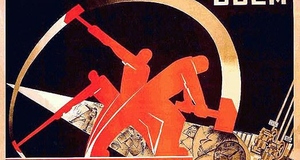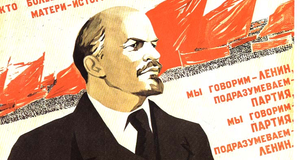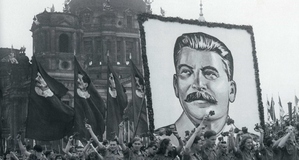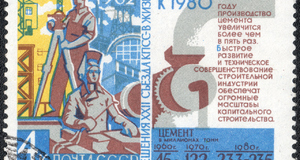The Soviet Nationality Policy in Central Asia
By
2013, Vol. 5 No. 03 | pg. 1/3 | »
IN THIS ARTICLE
KEYWORDS
The Soviet nationality policy for Central Asia in the early twentieth century was an acceleration of the processes of modernization that the Russian Empire had already begun. However, building socialism in a region where no working class existed and intellectuals based their knowledge primarily on religious texts presented inherent challenges. The primary means of identification for an individual lay within a particular tribe, valley, or oasis rather than in the Western concepts of ‘nationality’ or ‘ethnicity.’ Expanding over an enormous territory and inhabited by a multitude of peoples, the Bolsheviks were confronted with the task of creating a stable, multiethnic polity for the newly formed Soviet Union. The Bolsheviks did not come to power with a predetermined nationality policy and as will be made evident, it underwent significant alterations over the seventy years of communism. Indeed, from 1919 to 1923, the Communist Party struggled to form a consensus on how the many nationalities should be dealt with. Prior to the Bolshevik Revolution, Lenin envisioned a state composed of autonomous regions based on political-administrative divisions rather than ethnicity. However, after the revolution, the level of antagonism towards the imperial centre by short-lived independent nations led Lenin to understand that concessions to national rights would be necessary (Bremmer 1993, pp. 9). Theoretical Basis for the Nationality PolicyAt the Eighth Party Congress in March of 1919, Vladimir Lenin and Joseph Stalin clashed with others in the party on what exactly extending self-determination to individual nationalities would involve and how to implement a practical policy. In the age of nationalism and with the collapse of the Habsburg and Ottoman empires, they understood the dangers of being labelled an empire and tried to learn from previous mistakes.The policy agreed upon by Lenin and Stalin has been described by Terry Martin as an ‘Affirmative Action Empire:’ “a strategy aimed at disarming nationalism by granting what were called the ‘forms’ of nationhood” (Martin 2001, pp. 3). Their reasoning was based on the Marxist view that nationalism was a powerful mobilizing ideology used by the Bourgeoisie to mask their ‘counterrevolutionary plans.’ However, the paradox of Moscow’s policies was that they embraced Woodrow Wilson’s notion of self-determination. But instead of extending autonomy to ethnicities, “the aim was to overcome these differences by a merging of all nationalities in a common Soviet and socialist identity” (Coppieters 1998, pp. 18). The belief was that once nationalism was institutionalised, class divisions would emerge, thus allowing the Bolsheviks to recruit the proletarian and peasantry for their aims. Additionally, nationalism was a natural stage that society must experience before becoming modernized. Emphasizing it would ultimately drain it from the minds of people, causing it to fade away and be replaced with a unified sovietskii narod (Soviet people)(Bremmer 1993, pp. 9). The last premise for this policy was in response to Russian chauvinism, which was seen as a greater danger than local nationalism. They did not want their policies to be seen as Russian imperialism, and so inevitably the status of Russians in the USSR would have to be curtailed to further cohesion of the state (Martin 2001, pp. 20). National DelimitationThe USSR was split along political ethnic units and became a federalist system, at least in theory. Power would still be concentrated in the centre, and Russian provinces had no more power than in other republics (Ibid, pp. 13). Fifteen nationalities were given the highest standing of Soviet Socialist Republics (SSRs), according to Stalin’s four criteria: a set territory, national language, culture, and economy (Bohr 1996, pp. 349). Within these fifteen republics were, in order of decreasing standing, twenty Autonomous Soviet Socialist Republics (ASSRs), eight Autonomous Regions (oblasti), and ten Autonomous Areas (okruga) (Bremmer 1993, pp. 5) And yet, only fifty-three out of over one hundred national identities were officially recognized and thus granted special rights at the Twelfth Party Congress in 1923. It was only those recognized as ‘titular nationalities,’ or as Appleby states “‘nomenklatura nations,’ that succeeded in the USSR.” Non-titular nationalities could either consist of nationalities which were not officially recognized, or nationalities that were officially recognized but living in a territory other than his or her native one (i.e., Russians living in Kazakhstan)(Appleby 2010, pp. 847). The Soviet national delimitation completely transformed society, destroying the traditional organization of the region. In 1924, the Central Executive Committee dissolved the Turkestan, Khorezm, and Bukharan SSRs. Turkmenistan and Uzbekistan became full union republics, while the Tajik ASSR was included within the Uzbek SSR and the Kyrgyz ASSR within the Russian union republic in 1926. However, the borders established in 1924 were not officially settled until 1936, by when Tajikistan, Kazakhstan, and Kyrgyzstan were later upgraded to full union republics (Gleason 1997, pp. 336). The arbitrary borders did not correspond to cultural or linguistic boundaries and even in some cases divided a single nationality, resulting in large minorities located outside their territories. During the delimitation, an important condition was that every republic’s border ran alongside that of a foreign country. The reasoning behind this requirement was that in case of the secession of a republic, a territory within the USSR with no foreign borders would jeopardize the territorial integrity of the union. Of course the ability of a republic to secede was purely theoretical, as the approval of such an action would have to be granted from the centre. These consequences show that Moscow’s policies were more a result of a divide-and-rule strategy than Marxist ideology or sheer ignorance of realities on the ground (Blank 1994, pp. 54-5). IndigenisationWithin each and every political unit was established the policy of korenizatsiya, or indigenisation. Indigenisation was the policy through which ”titular national cultures were promoted and members of titular nationalities were given preference for state-controlled benefits such as education, housing, and employment” (Bremmer 1993, pp. 10). This policy was seen as necessary in order to minimize the dominance of Russians in the state and to promote equality among all national identities (Coppieters 1998, pp. 23). Local cadres who were familiar with native customs and practices were invited to take top positions in their regions in order to make Soviet authority feel native and popular (Martin 2001, pp. 12). In practice, indigenisation was characterized by a ‘doubling of functions,’ where natives in positions of power were monitored by parallel Slavic colleagues. This feature was pervasive throughout the Soviet system and in all sectors, and thus quite effective in maintaining a uniform policy among the republics (Soucek 2000, pp. 229). In essence, indigenisation “emphasized not the content of ethnic tradition but its mere form” (Blitstein 2006, pp.288). Nationalities were not only promoted but institutionalized; individuals had to perceive themselves as belonging to the nationality of the titular nation they found themselves in, regardless if they actually corresponded to their own (Appleby 2010, pp. 852). Where nationalities did not exist, or were not clearly identifiable, they were invented and local elites were created to govern over the area. Influence of IslamDuring the national delimitation of the Central Asian republics, the Bolsheviks had widely present in their minds the fear of pan-Islamism and pan-Turkism. For this reason, they tried to monitor and limit relations between nationalities, and the creation of artificial ethnicities served to further fragmentation in the region (Blank 1994, pp. 54). Islam as both a form for societal organization and as a faith was undermined by the launch of the antireligious campaign in the 1920s, when Muslim schools, courts, and mosques were closed.Continued on Next Page » Suggested Reading from Inquiries Journal
Inquiries Journal provides undergraduate and graduate students around the world a platform for the wide dissemination of academic work over a range of core disciplines. Representing the work of students from hundreds of institutions around the globe, Inquiries Journal's large database of academic articles is completely free. Learn more | Blog | Submit Latest in History |



















